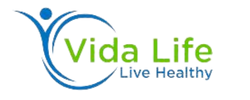International Medical Corps believes that efficient healthcare services can save lives. They strive to strengthen local community-level health systems and hospitals in rural communities, as well as supporting their staff by training health workers.
Search online for health information to determine who created and published it, and where its source lies. Reputable websites usually clearly indicate who stands behind their pages.
School Physicians
School-based health centers (SBHCs) provide medical professionals who assist students in managing chronic and acute illness, administer physical exams and vaccinations, offer healthy lifestyle and wellness education, provide emergency care services and offer coordination systems with primary health care providers.
Physicians may work with schools in a variety of ways, from full or part-time employment, independent contracting, volunteering on school health advisory committees or acting as board members. But physicians in public school districts should make sure their roles and responsibilities are clearly defined with fair compensation in written contracts outlined to protect both parties involved.
School-based clinics can be an invaluable source of health support for children whose families do not have regular access to medical care. Studies indicate that more students utilize SBHCs who have private insurance or health maintenance organization coverage (HMO) versus those without such coverage.
HRSA-Funded Health Centers
Health Resources and Services Administration manages several health centers that serve medically underserved communities by offering primary and support care, often on a sliding fee scale, for individuals without access to health care. They serve over 19 million people annually (HRSA, 2011j).
HRSA offers an online tool called Find A Health Center that makes it easier to search for health centers nearby. They also maintain a YouTube channel with videos covering topics like primary healthcare, organ donation, the National Health Service Corps and HIV/AIDS.
To qualify for HRSA funding, an organization must meet certain criteria. These include having a board of directors made up of at least 51% community representatives who represent its area of service; additionally, health centers must serve specific populations or announced service areas.
HRSA-Funded Maternal Health Hotline
HRSA has launched a nationwide campaign to raise awareness of their hotline that provides free and confidential support through both calls and texts. They have partnered with retailers, grocers, pharmacies, health and community organizations as well as others to distribute promotional materials about this hotline in locations where mothers and pregnant women typically go.
HRSA placed particular importance on crafting materials with clear messages and using culturally tailored approaches, according to Grossman. They focused on explaining why people contact the hotline and tracked KPIs as measures of success for the campaign.
The agency is working closely with state maternal health innovation programs, which are undertaking innovative initiatives designed to address specific challenges within their states. Examples of such efforts include developing mobile simulation trainings to better prepare providers for adverse labor events, conducting research into how best to identify and treat hypertension during gestation to reduce preeclampsia risk and increasing access to mental health services in rural areas.
HHS Programs
HHS programs serve Americans across the country by protecting public health, furthering medical research and creating national policies.
Biomedical researchers, regulators, service providers, analysts and educators require diverse expertise and perspectives when conducting their activities. Each may bring different backgrounds and priorities.
HHS programs prioritize social factors that contribute to health and well-being as an element of healthcare services, including Temporary Assistance for Needy Families and Head Start financial aid for low-income families with children; child care; foster adoption services and other support.
HHS receives funding both directly from the federal government and through transfers to states, which use it for various services to vulnerable citizens locally. As of 2024, it accounted for 25.4% of the federal budget; its percentage may change depending on major legislation or economic conditions within and/or outside the country. It has four operating divisions within HHS including Medicare & Medicaid Services (CMMS), Administration for Children & Families (ACF), Agency for Healthcare Quality and the Food & Drug Administration.

